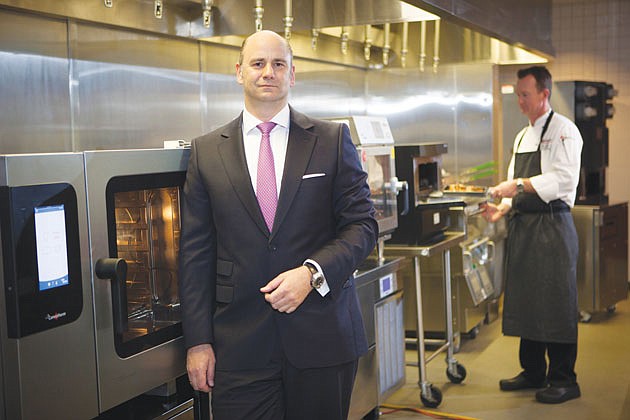- November 27, 2024
-
-
Loading

Loading

If Hubertus Muehlhaeuser can run a business in constant transformation, anyone can.
The CEO of New Port Richey-based Welbilt, Muehlhaeuser executed two major changes within 12 months. First, in March 2016, the company, then named Manitowoc Foodservice, spun itself off from its original business, Wisconsin-based construction equipment giant Manitowoc. That created a $1.45 billion company. Next, in February, the company changed its name, to Welbilt. The shift included a new logo, brand identity and stock ticker on the NYSE.
Through the changes, the company internally transformed into an entrepreneurial-style business, says Muehlhaeuser, where we “challenge the status quo, and we fight the bureaucracy.”
That kind of model should be more commonplace in entrepreneurial-minded businesses — big or small — according to a host of new research and experts. The big takeaway: Keeping a business ahead of competitors requires a keen understanding of how to plan and execute continual business transformation.
Nearly two-thirds of business executives in the KPMG 2016 Global Transformation Study, out of 1,600 responses, say their companies have started or completed a transformation program in the past two years. And the Boston Consulting Group, in its new eBook, “Transformation: Delivering and Sustaining Breakthrough Performance,” contends, “Business as usual with incremental improvements will not suffice.” Adds the book's introduction: “Leaders must transform the company, through a fundamental reboot that leads to a sustainable step change improvement in performance and, ultimately, shareholder value.”
But what exactly is constant transformation? And how can a company do it?
“It means an entrepreneur has to investigate everything that's going on in their business and be ready to change,” says Cookie Boudreaux, a Sarasota-based business consultant and senior partner with Mark Kamin & Associates. “This is about leading all the time.”
Doug Van Dyke, founder of Bradenton-based Leadership Simplified, says he coaches clients to think about transformation, or what he calls re-invention, at least every two years — both for themselves and their company. “To keep up with changes in market conditions,” Van Dyke says, “we need to be nimble today, no matter what industry we are in.”
At Welbilt, Muehlhaeuser and his top managers run the business, which operates 18 manufacturing facilities worldwide and has about 5,500 employees, with that kind of keen sense of urgency. The company also seeks to put people in leadership roles who understand transformation is a good thing, not something to run away from.
“You need to be fast and find people who are good change agents,” Muehlhaeuser says. “You have to find the distractors quickly and move them out.”
Business consultants agree. “Transformation only occurs with people,” says Boudreaux. “It's not really something you can have an algorithm for.”
TRANSFORM TIMES
Steps companies and entrepreneurs can take to become a company in constant transformation include:
• Redo the company's organizational chart every year or 18 months. (This is a cousin of the noted business philosophy from “Good to Great” author Jim Collins, to put the right people in the right seats on the bus.) “Put all the people in your organization over to the side,” says business and executive coach Doug Van Dyke. “Then take a deep breath and think about what you need to really be successful.”
• Change the company's meeting structure. Sarasota-based executive coach Marc Simms suggests going from a weekly setting to a daily stand-up meeting, 10 minutes tops. That provides a good forum, says Simms, for an entrepreneur to execute on one of the most important elements of constant transformation: being transparent with employees. “You need to have something to talk about what's going on now,” says Simms.